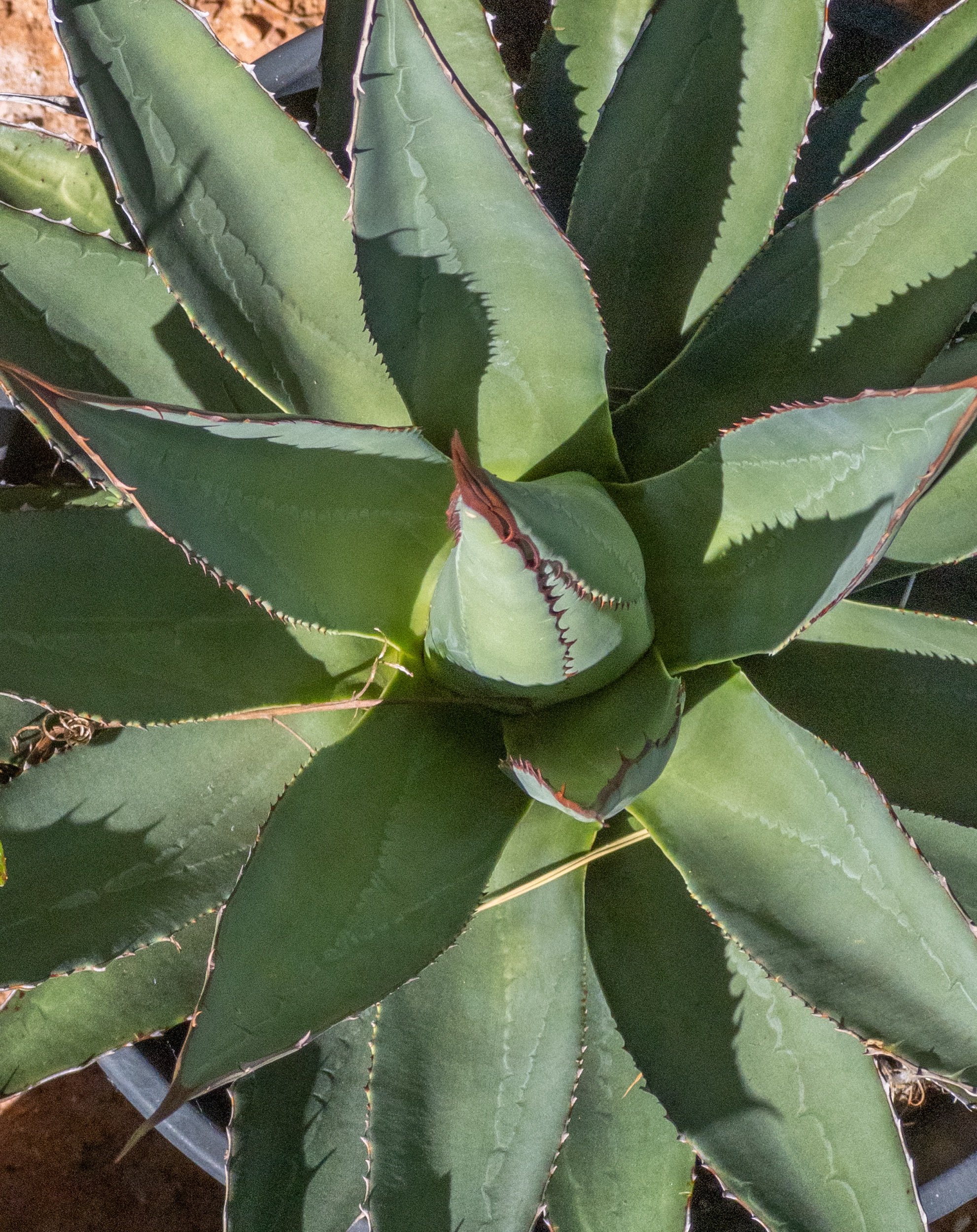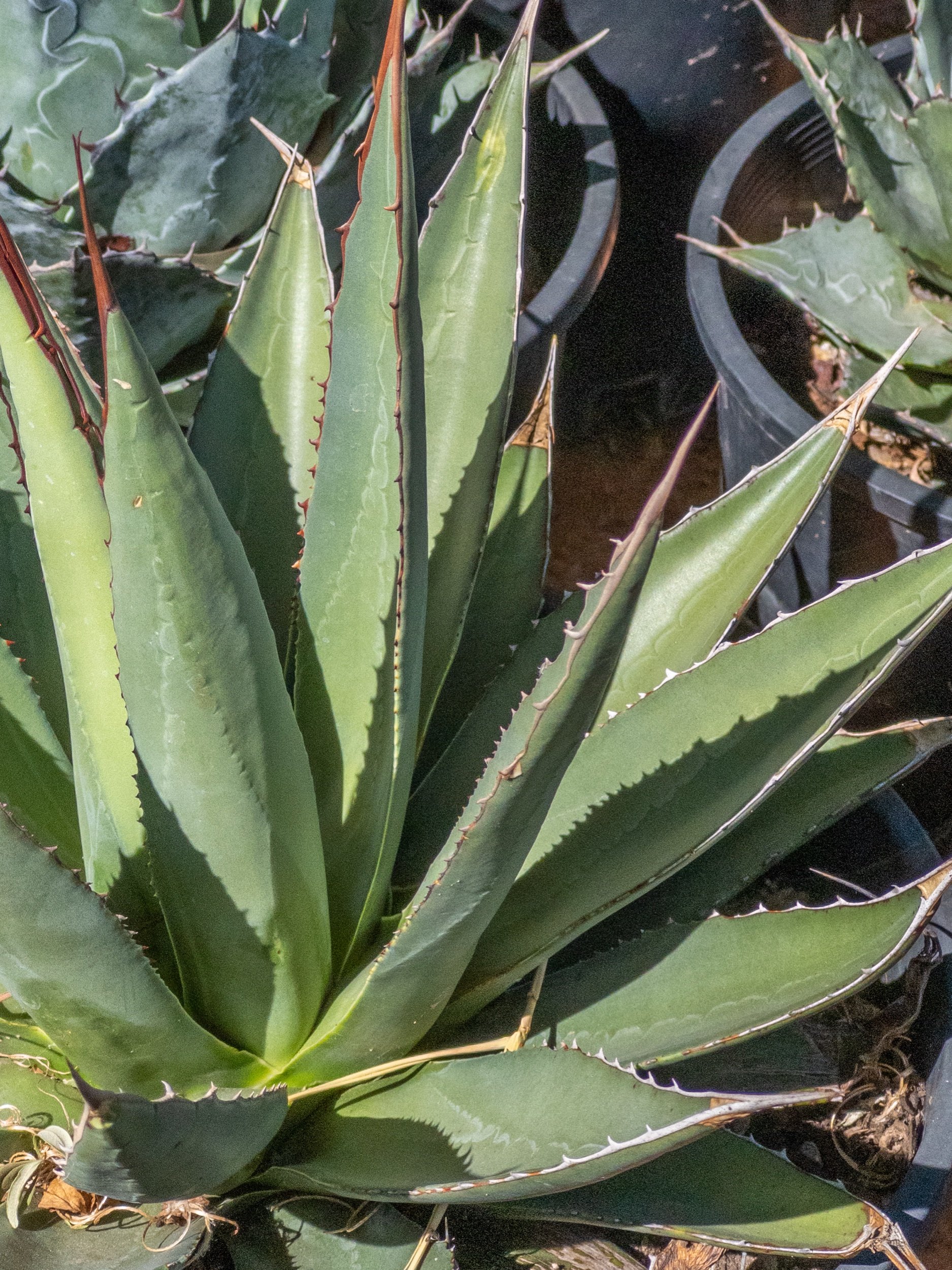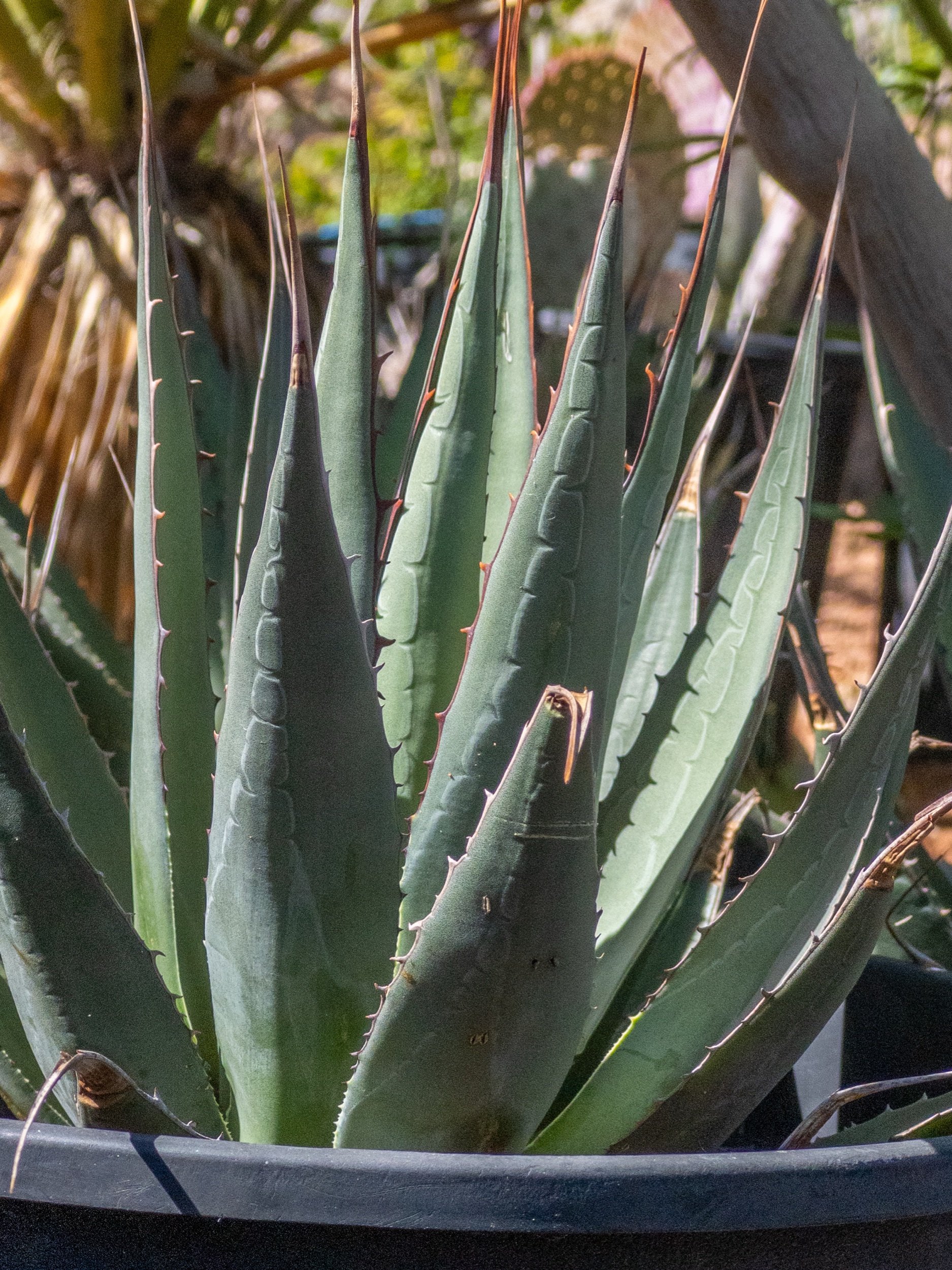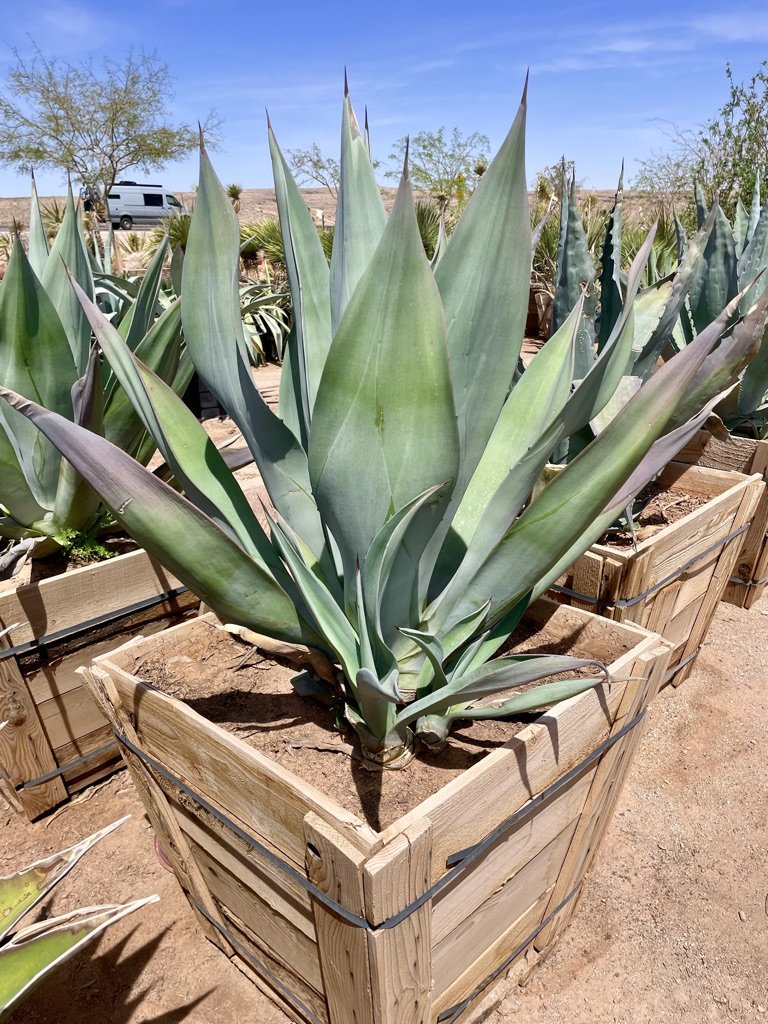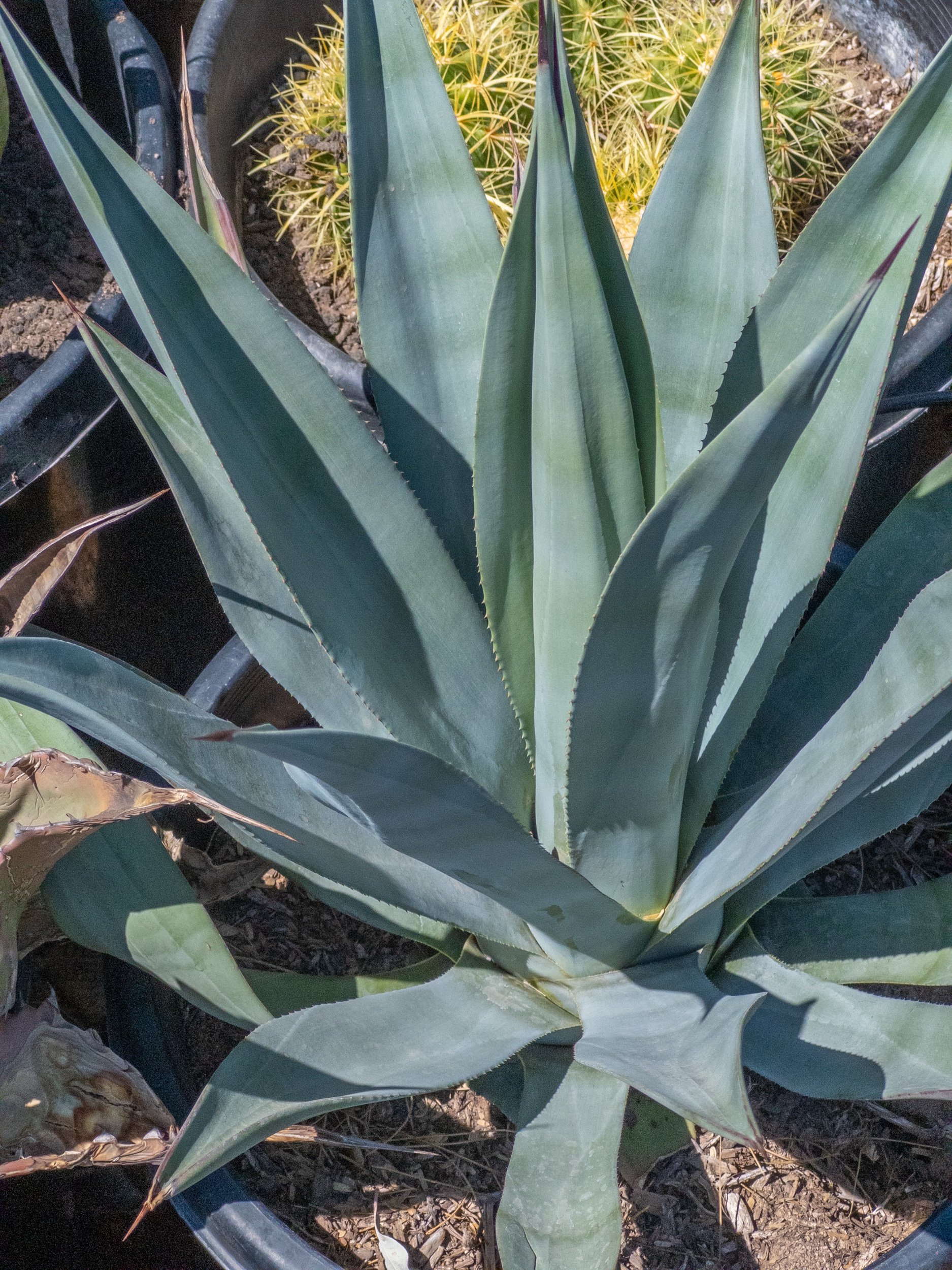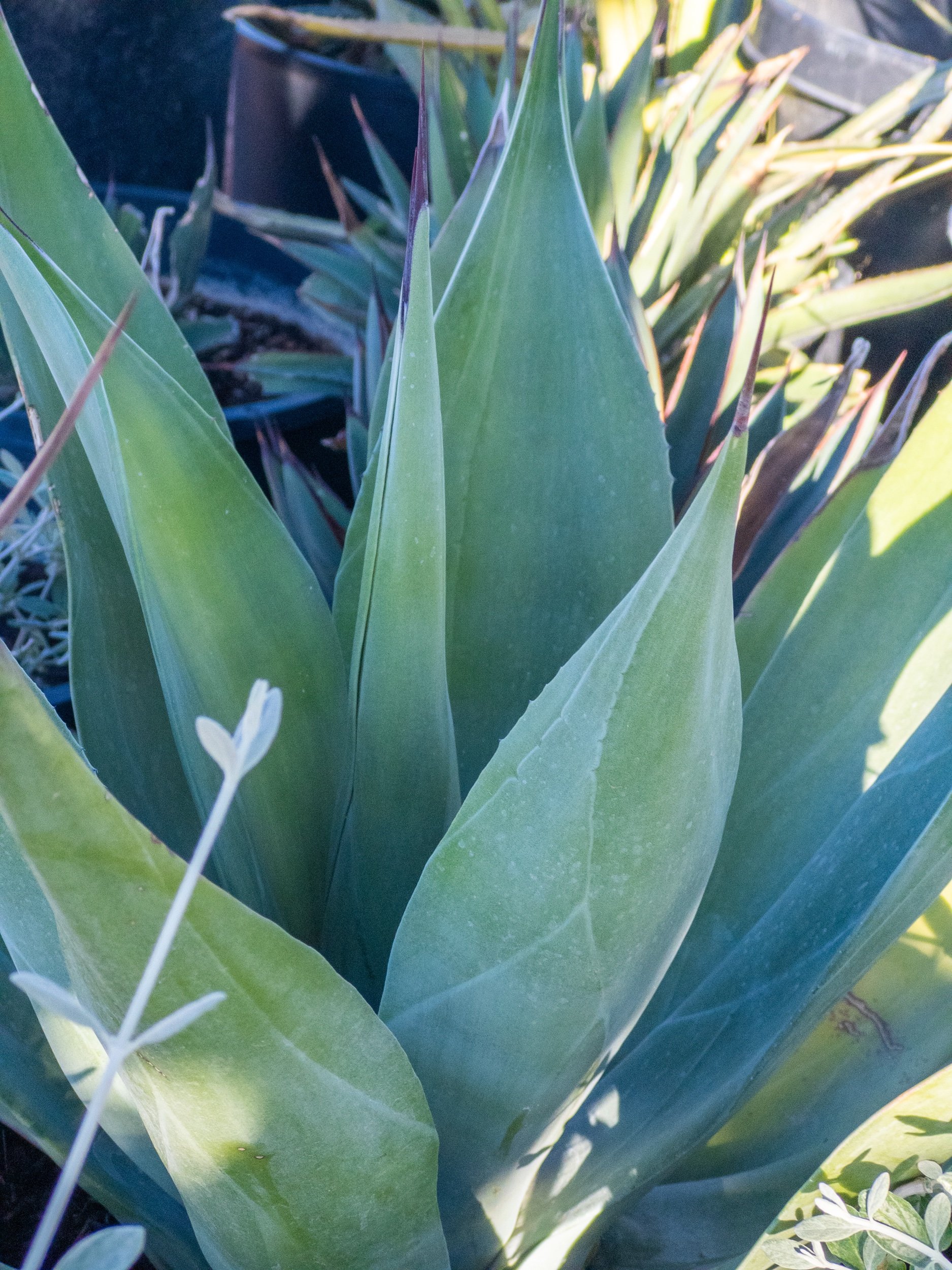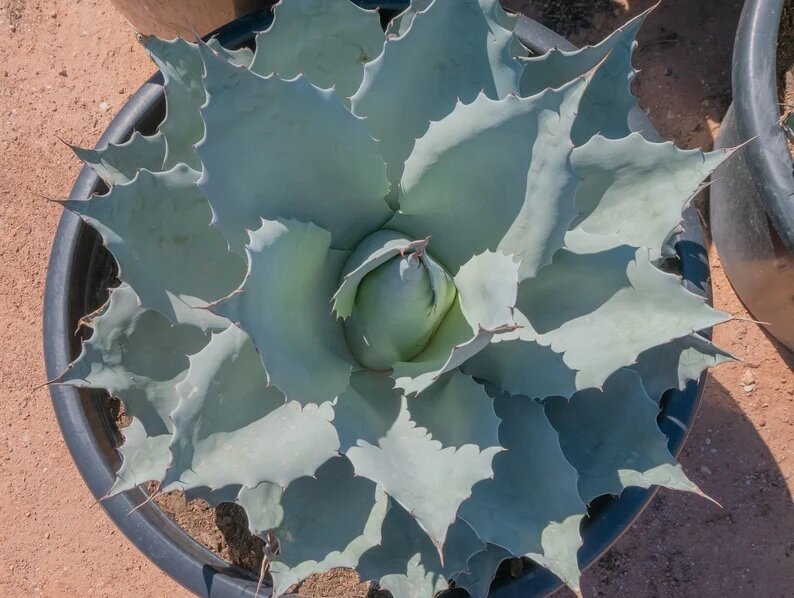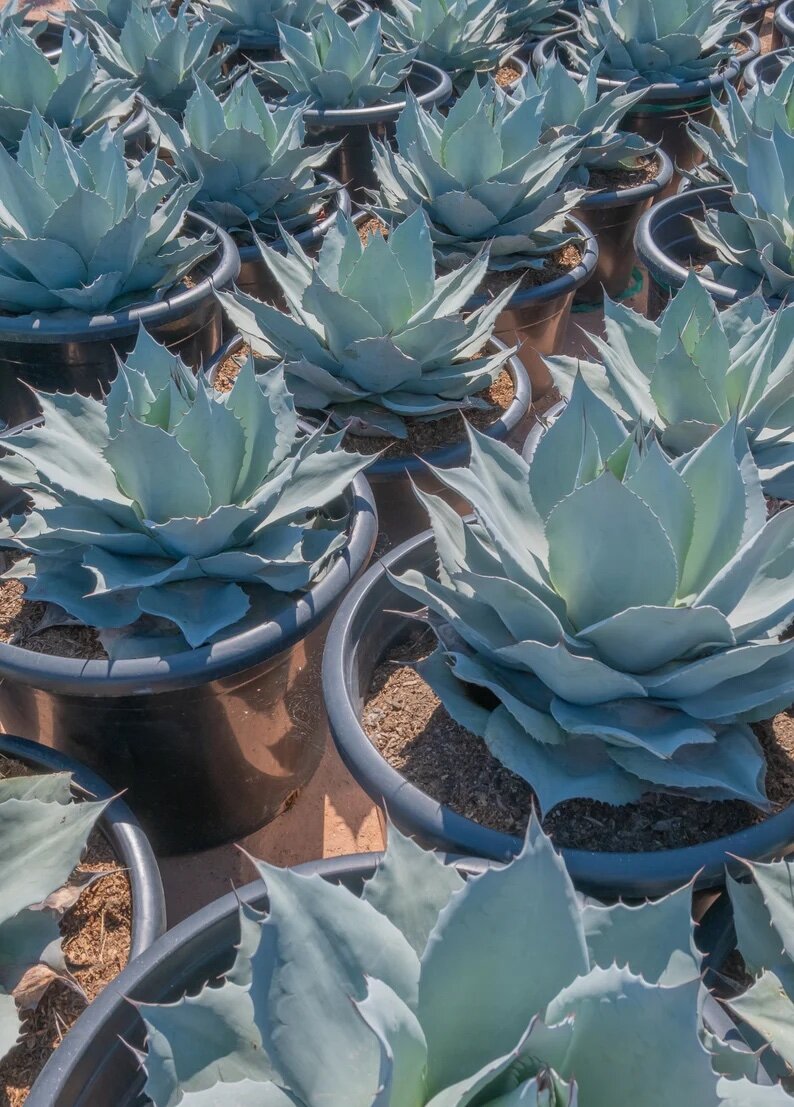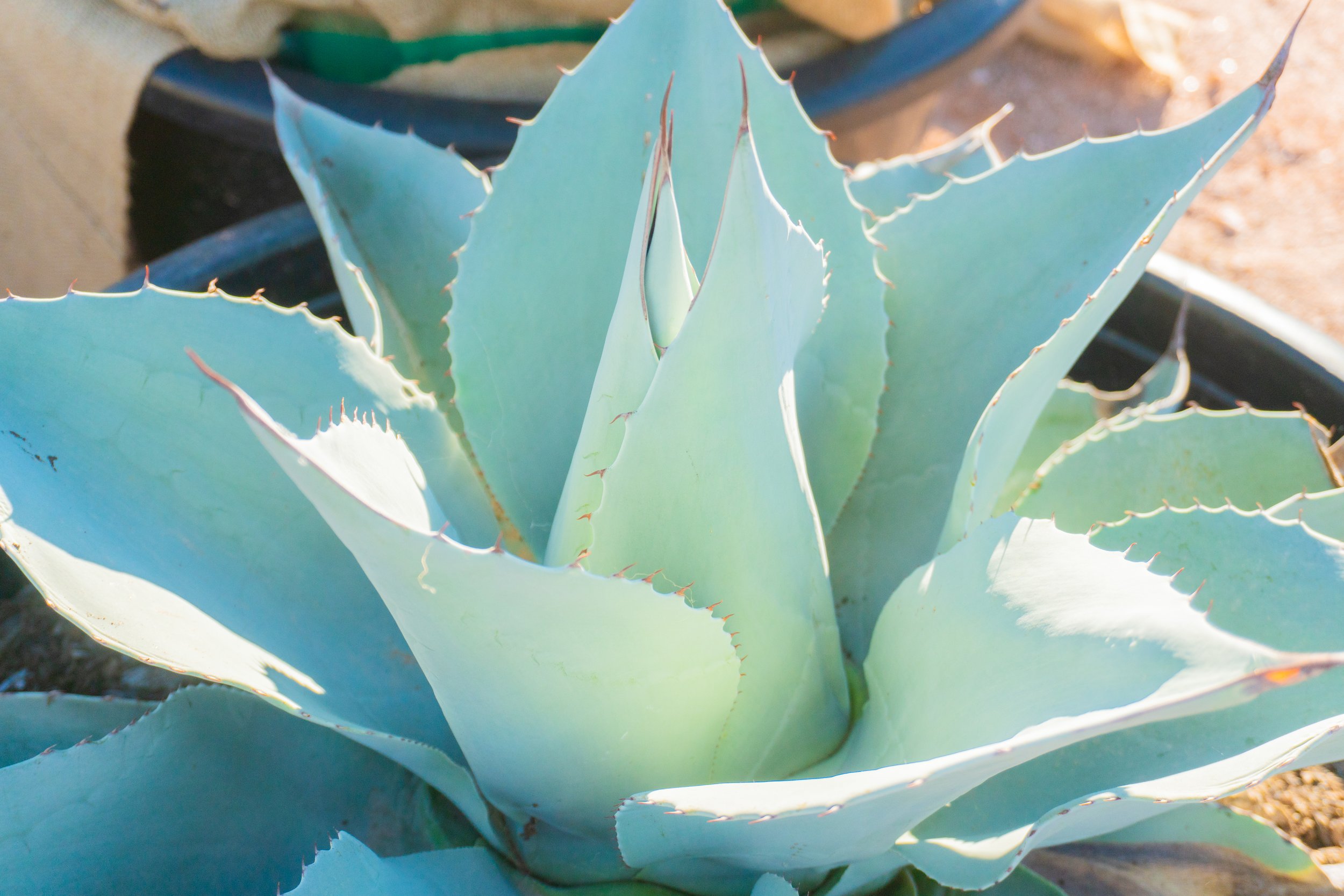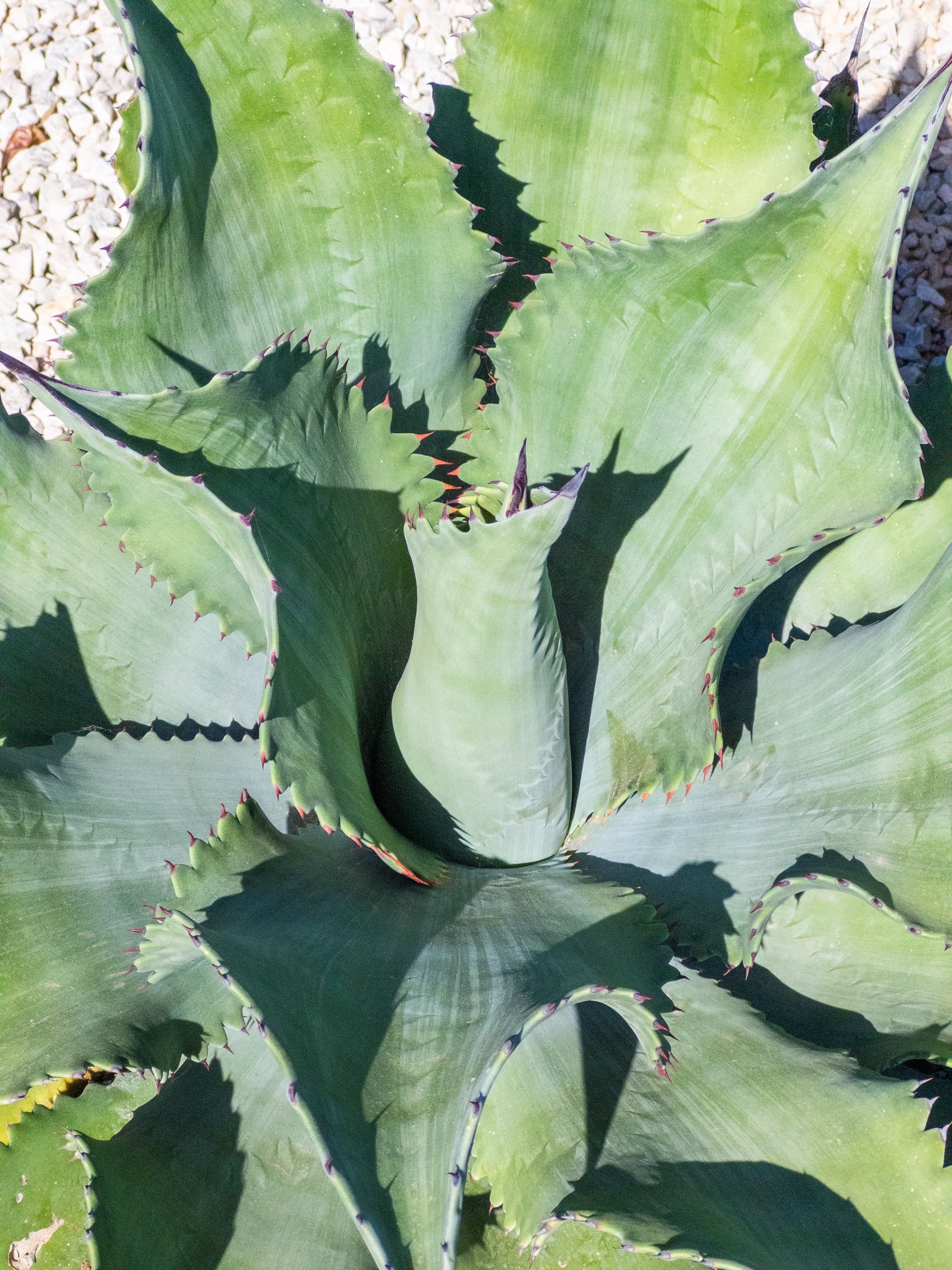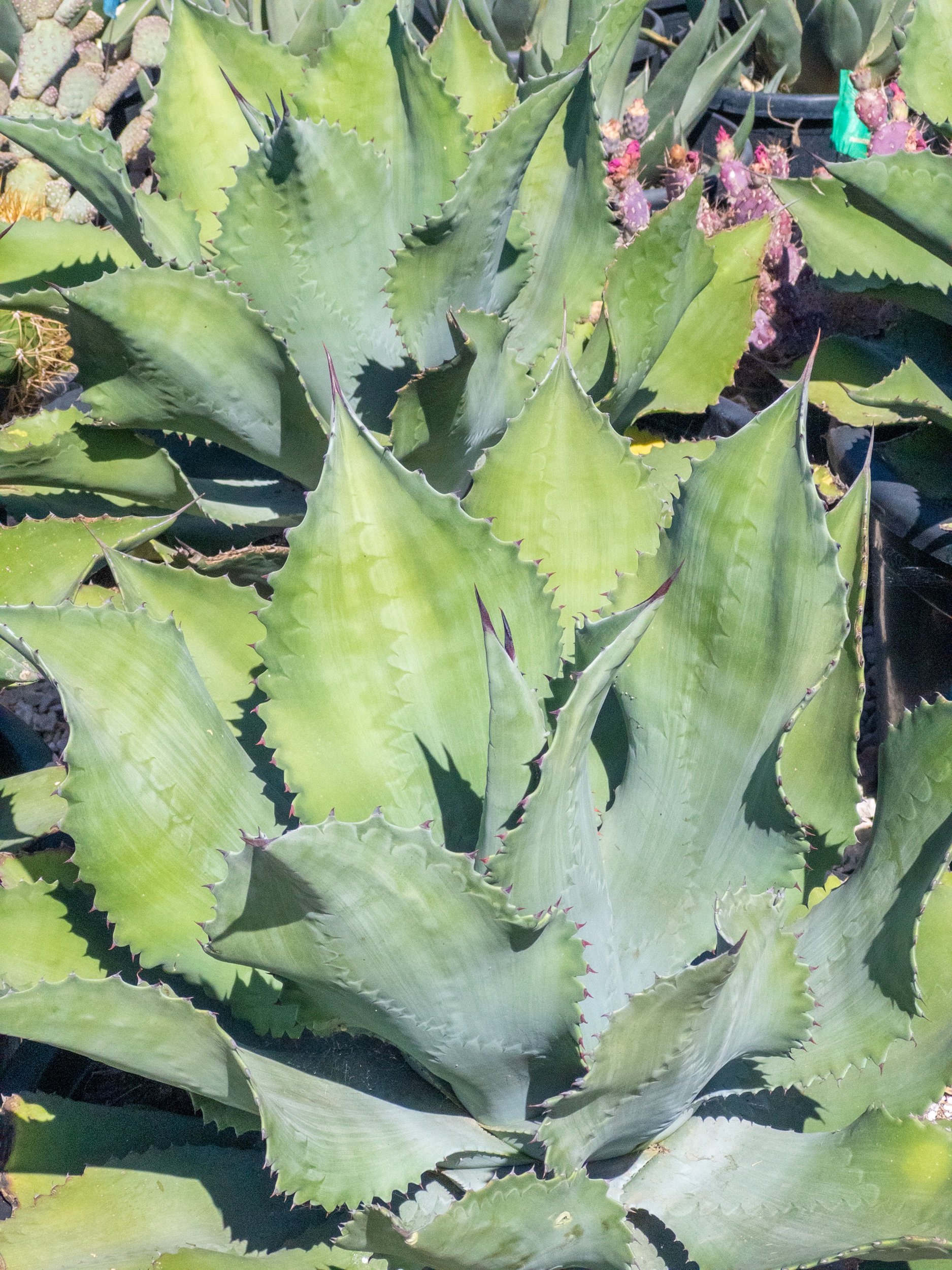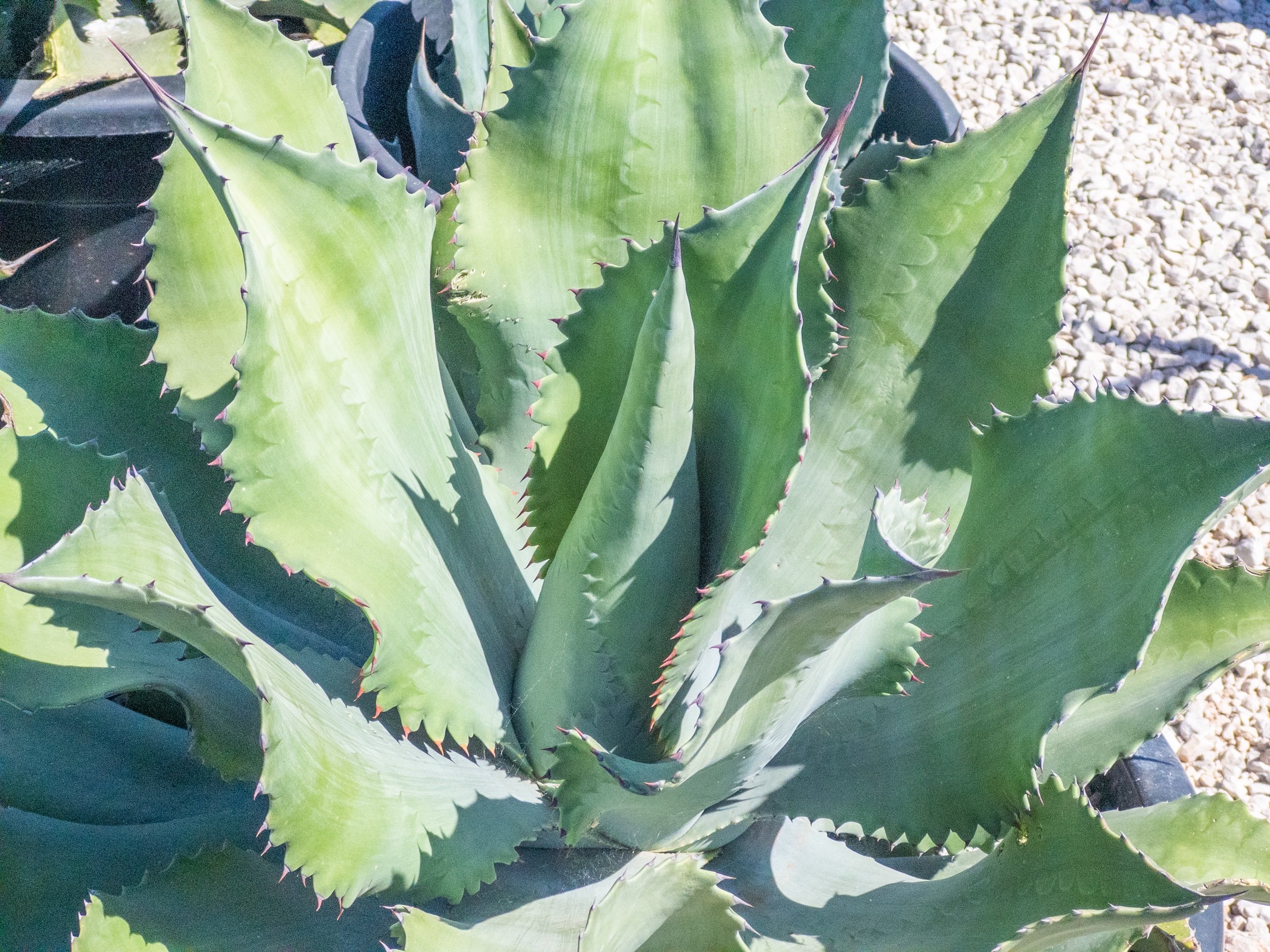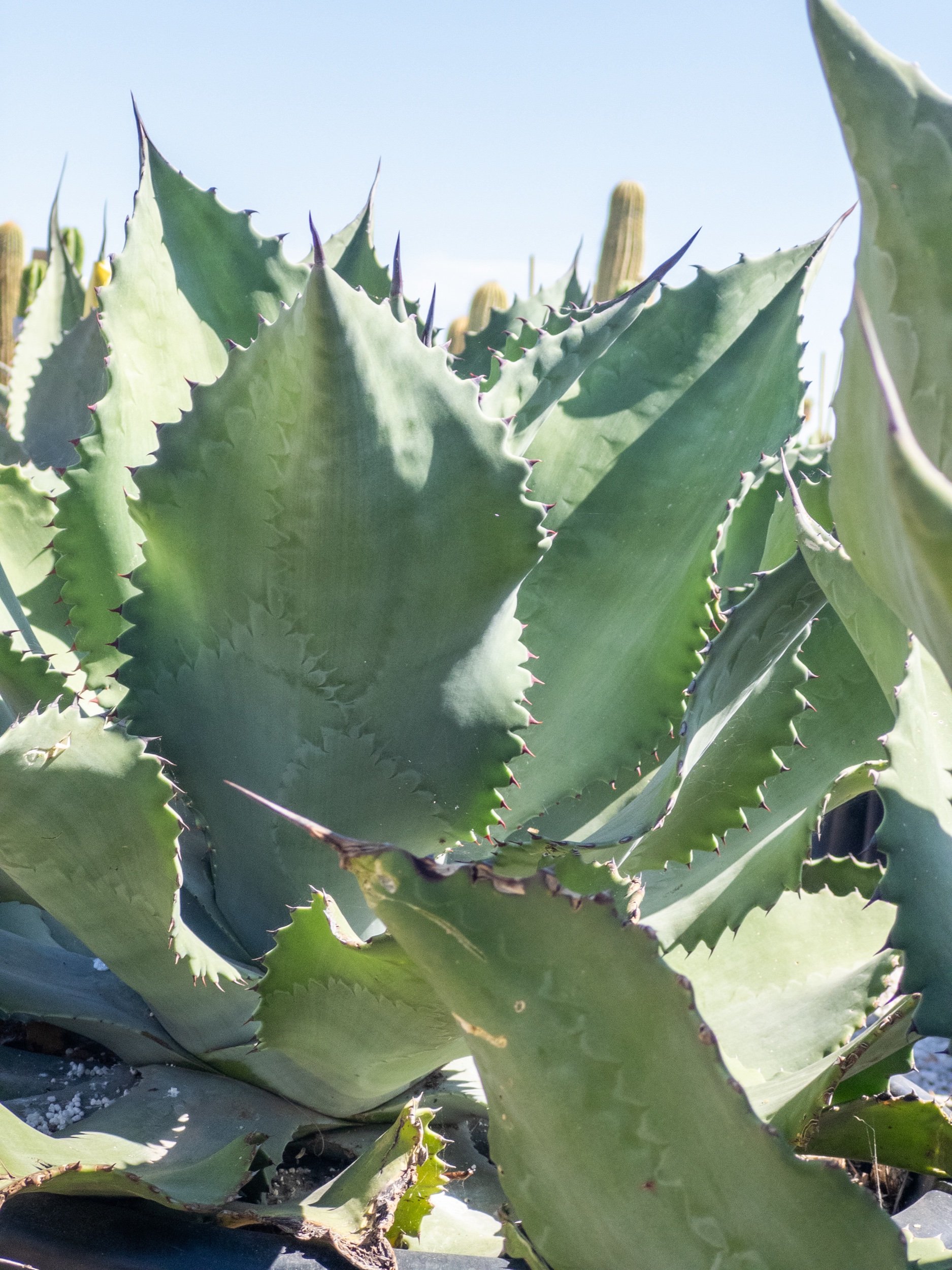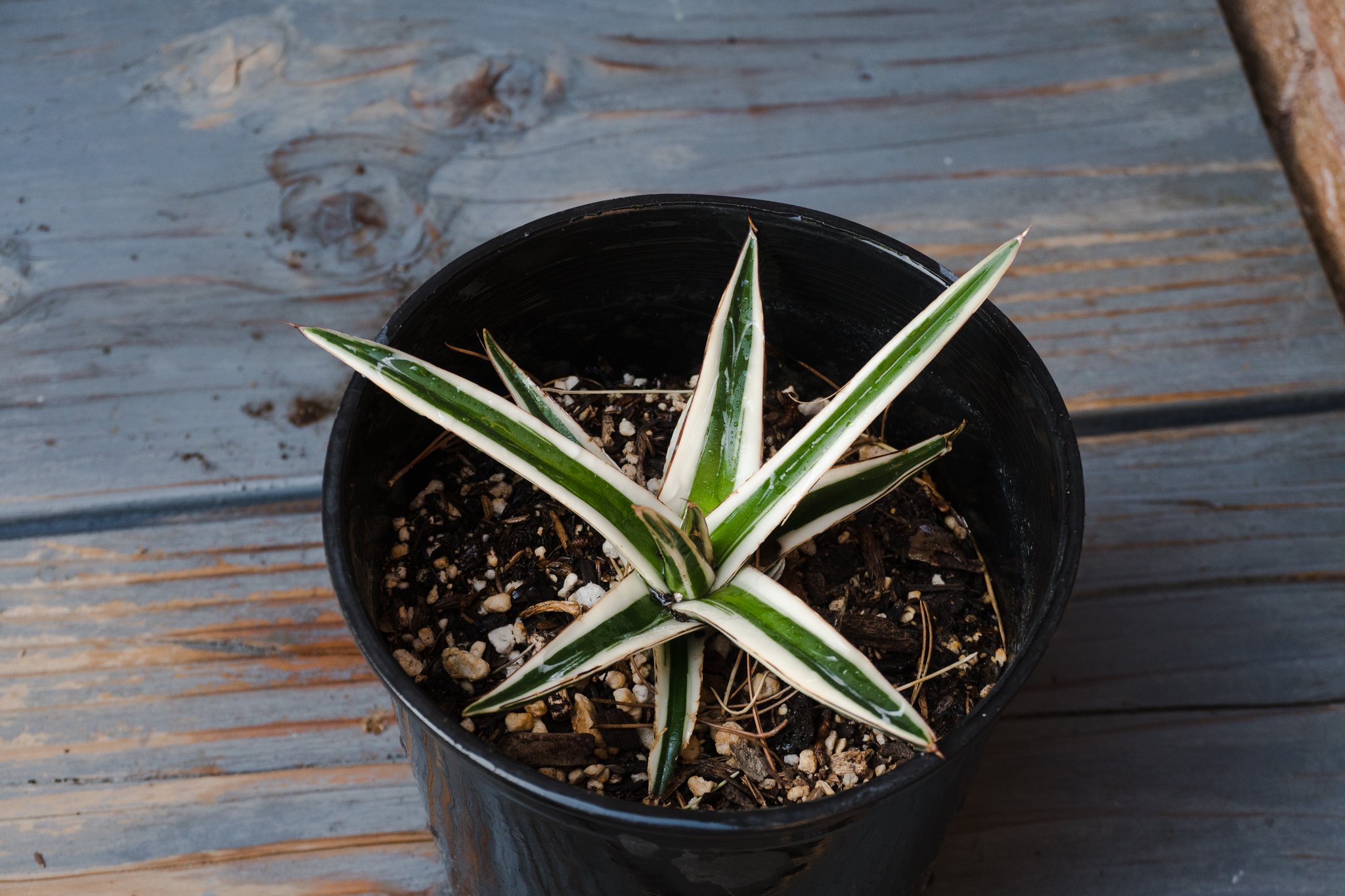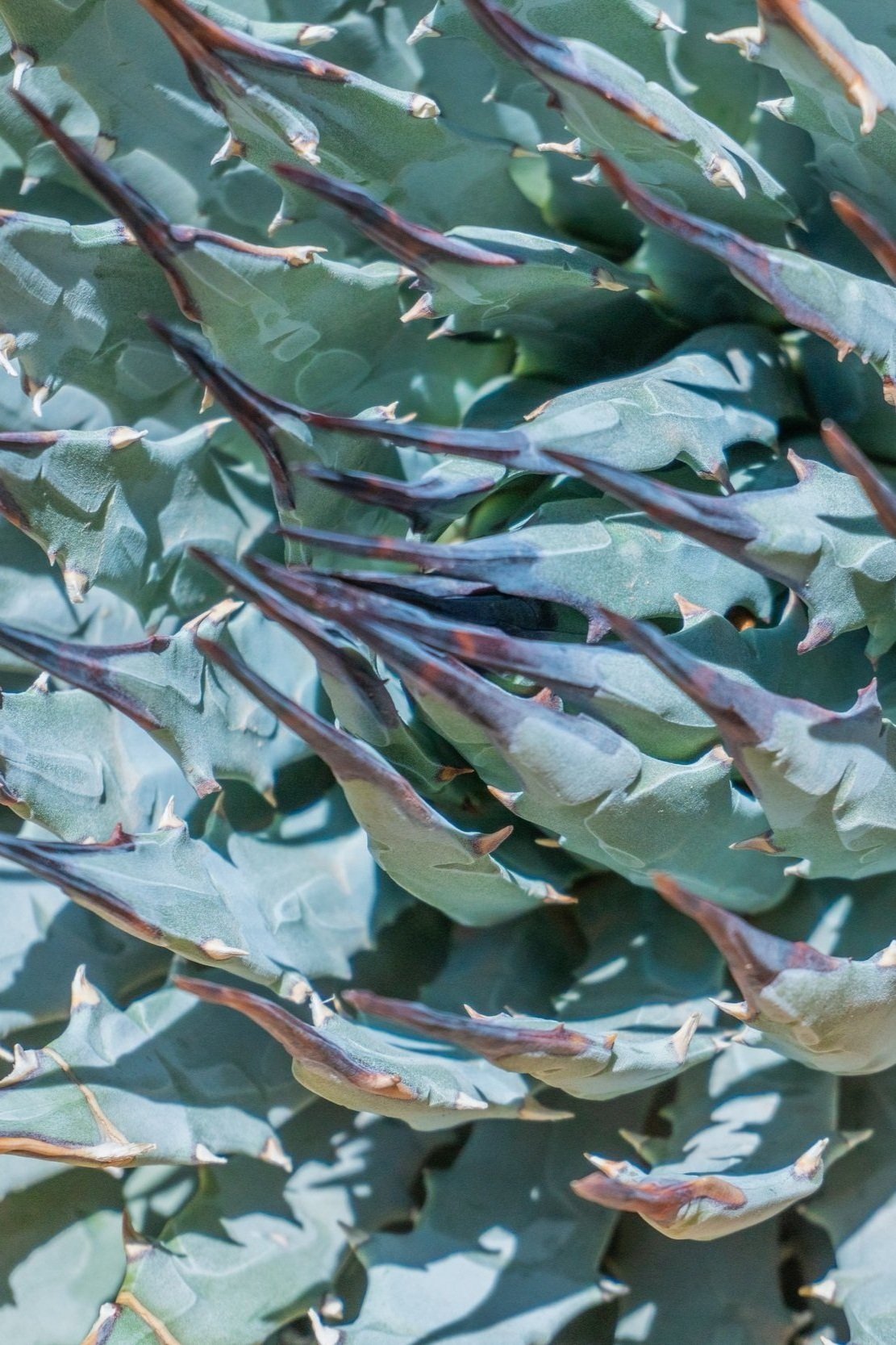 Image 1 of 14
Image 1 of 14

 Image 2 of 14
Image 2 of 14

 Image 3 of 14
Image 3 of 14

 Image 4 of 14
Image 4 of 14

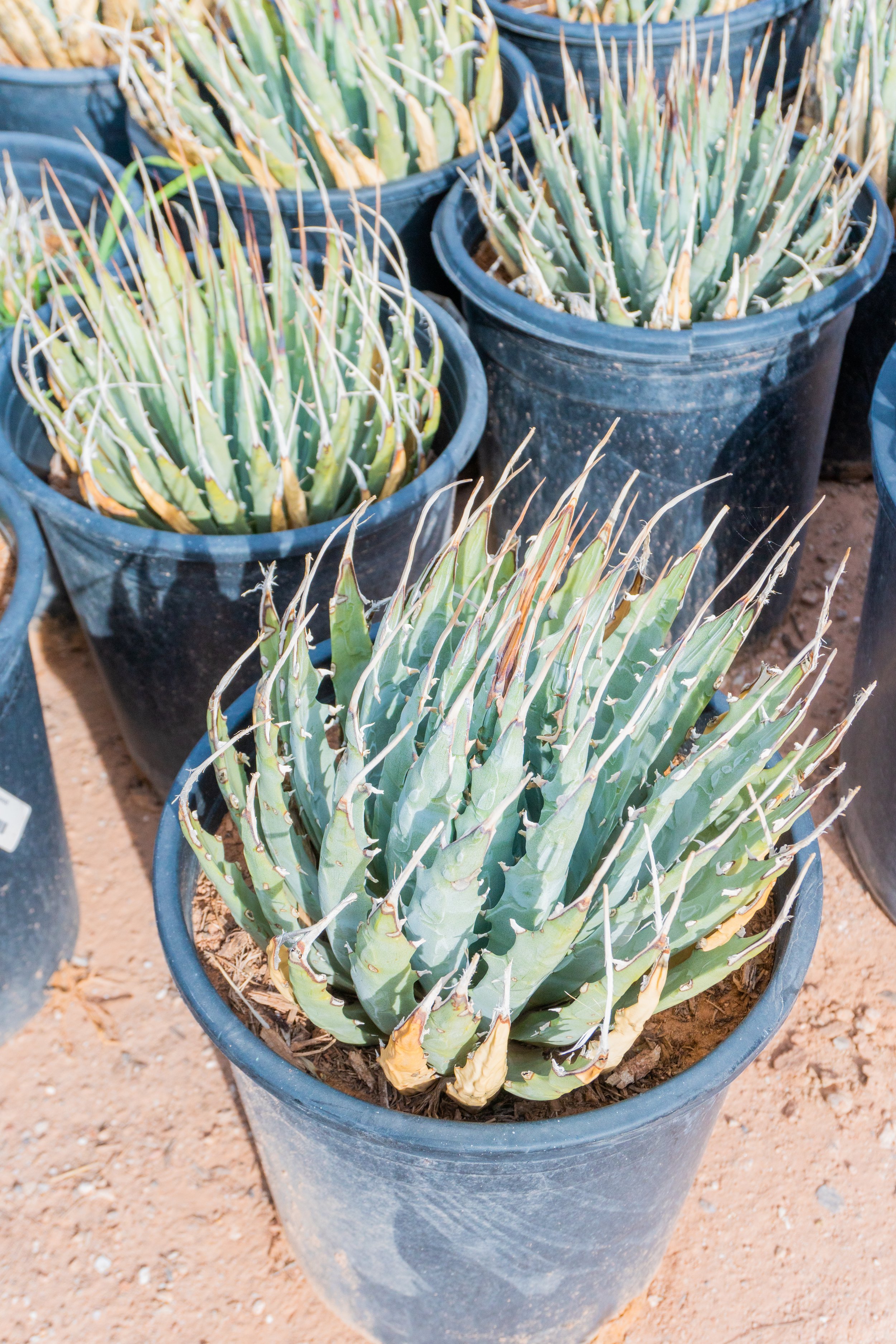 Image 5 of 14
Image 5 of 14

 Image 6 of 14
Image 6 of 14

 Image 7 of 14
Image 7 of 14

 Image 8 of 14
Image 8 of 14

 Image 9 of 14
Image 9 of 14

 Image 10 of 14
Image 10 of 14

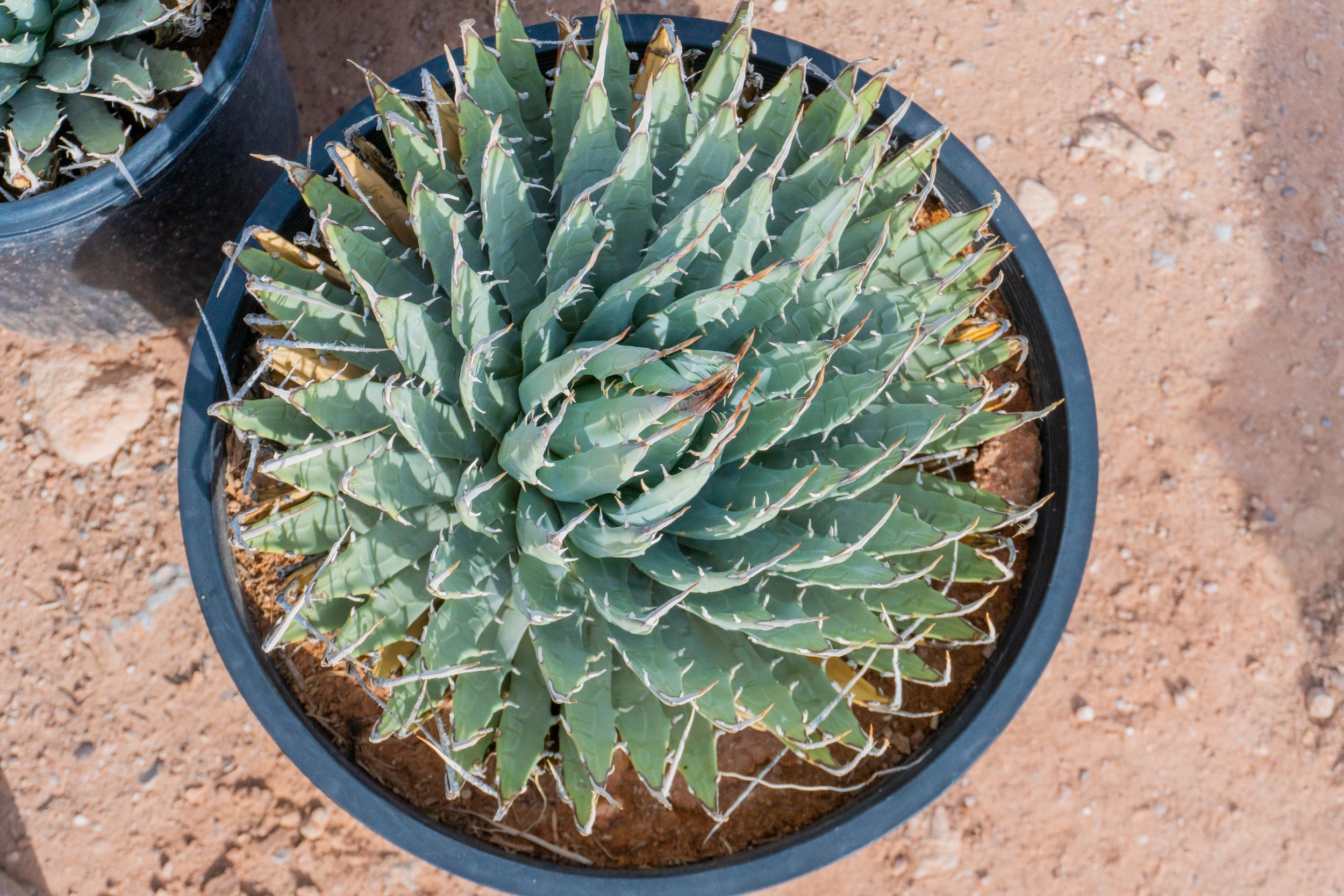 Image 11 of 14
Image 11 of 14

 Image 12 of 14
Image 12 of 14

 Image 13 of 14
Image 13 of 14

 Image 14 of 14
Image 14 of 14















Utahensis Agave var. Nevadaensis
Introducing the Agave utahensis – a resilient and striking succulent that embodies the rugged beauty of the southwestern United States. Elevate your garden with this exquisite agave, a symbol of hardiness and natural elegance that will undoubtedly become a focal point of your botanical haven.
Description: The Agave utahensis, native to the arid landscapes of the American Southwest, is a captivating succulent that stands out with its sculptural beauty. Forming a tight rosette of thick, fleshy leaves, this agave showcases a stunning blue-green coloration, creating a visual masterpiece that harmonizes with the arid environment it calls home. With its compact size and unique symmetry, the Agave utahensis is a perfect choice for those seeking a plant that combines both resilience and aesthetic charm.
Caring for Your Agave utahensis: Indulge in the ease of caring for the Agave utahensis. Plant it in well-draining soil, preferably a cactus mix enriched with sand or perlite, to ensure optimal drainage for its roots. Position it in a sunny location, as this sun-loving succulent thrives in bright conditions. Water sparingly, allowing the soil to dry out between waterings to mimic its native arid habitat. With minimal maintenance, the Agave utahensis will flourish and become a striking addition to your succulent collection.
Horticulture Insights: Native to the rocky slopes and desert plateaus of Utah and adjacent regions, the Agave utahensis is well-adapted to elevations ranging from 2,000 to 6,000 feet. Its ability to endure harsh conditions, from intense sunlight to low precipitation, makes it a resilient choice for gardens and landscapes with a southwestern flair.
Cold Hardiness: This agave exhibits impressive cold hardiness, tolerating temperatures as low as 0°F (-17.8°C). Whether displayed as a solitary focal point in your garden or as part of a succulent ensemble, the Agave utahensis maintains its regal presence even in cooler climates, making it a versatile choice for various environments.
Soil Preference: Optimize the growth of your Agave utahensis by planting it in well-draining soil. A cactus mix enriched with sand or perlite provides the ideal conditions for preventing waterlogged roots and ensuring the health of this remarkable succulent.
Unique Information: Beyond its striking appearance, the Agave utahensis has a unique feature – its leaves are armed with sharp spines along the margins, serving as both a visual deterrent and a protective adaptation against herbivores. This natural defense mechanism adds an extra layer of intrigue to the resilient character of the Agave utahensis.
Don't miss the opportunity to bring the spirit of the American Southwest into your garden. Order the Agave utahensis now and experience the joy of cultivating a succulent that seamlessly blends natural elegance with rugged resilience. Transform your outdoor space into a haven of botanical beauty with the captivating presence of the Agave utahensis.We have seed grown in smaller sizes like 1 gallon but the rest are wild harvested.
The purchasing options will include straight and spiral tips. You can notice the difference between the two in the photos. The spiral tips are more rare and sought after for collectors.
Sun: Full
Water: Low
Soil: Sandy, Rocky
Transplanting Tips:
Transplanting Agave utahensis can be a relatively straightforward process, but it's important to take the necessary precautions to avoid damaging the plant or injuring yourself. Here are the steps and tips to follow:
Choose a location for the transplant that receives plenty of sunlight and has well-draining soil. The soil should be sandy or gravelly and not retain water for long periods of time.
Dig a hole that is at least twice as wide and deep as the root ball of the plant. Use a shovel or garden fork to loosen the soil around the root ball.
Place the Agave in the hole you have prepared, making sure that the top of the root ball is level with the surrounding soil.
Backfill the hole with soil, being careful not to leave any air pockets around the roots. Tamp down the soil gently to ensure good contact with the roots.
Water the plant thoroughly, making sure that the soil is moist but not waterlogged. In the weeks following the transplant, water the plant regularly to help it establish itself in its new location.
Here are some additional tips to keep in mind when transplanting Agave utahensis:
Transplant the Agave in the spring or fall, when temperatures are mild and the plant is less likely to experience stress.
Wear gloves and long sleeves when handling the plant, as the leaves are sharp and can cause injury.
If you are transplanting the Agave from a pot, be sure to choose a pot that is only slightly larger than the root ball to avoid overwatering and promote healthy growth.
*PHOTOS ARE EXAMPLES OF PLANT, THE ONE YOU WILL RECEIVE WILL DIFFER SLIGHTLY
SHIPPED BARE ROOT / PLEASE CHECK LOCAL SHIPPING RESTRICTIONS
Introducing the Agave utahensis – a resilient and striking succulent that embodies the rugged beauty of the southwestern United States. Elevate your garden with this exquisite agave, a symbol of hardiness and natural elegance that will undoubtedly become a focal point of your botanical haven.
Description: The Agave utahensis, native to the arid landscapes of the American Southwest, is a captivating succulent that stands out with its sculptural beauty. Forming a tight rosette of thick, fleshy leaves, this agave showcases a stunning blue-green coloration, creating a visual masterpiece that harmonizes with the arid environment it calls home. With its compact size and unique symmetry, the Agave utahensis is a perfect choice for those seeking a plant that combines both resilience and aesthetic charm.
Caring for Your Agave utahensis: Indulge in the ease of caring for the Agave utahensis. Plant it in well-draining soil, preferably a cactus mix enriched with sand or perlite, to ensure optimal drainage for its roots. Position it in a sunny location, as this sun-loving succulent thrives in bright conditions. Water sparingly, allowing the soil to dry out between waterings to mimic its native arid habitat. With minimal maintenance, the Agave utahensis will flourish and become a striking addition to your succulent collection.
Horticulture Insights: Native to the rocky slopes and desert plateaus of Utah and adjacent regions, the Agave utahensis is well-adapted to elevations ranging from 2,000 to 6,000 feet. Its ability to endure harsh conditions, from intense sunlight to low precipitation, makes it a resilient choice for gardens and landscapes with a southwestern flair.
Cold Hardiness: This agave exhibits impressive cold hardiness, tolerating temperatures as low as 0°F (-17.8°C). Whether displayed as a solitary focal point in your garden or as part of a succulent ensemble, the Agave utahensis maintains its regal presence even in cooler climates, making it a versatile choice for various environments.
Soil Preference: Optimize the growth of your Agave utahensis by planting it in well-draining soil. A cactus mix enriched with sand or perlite provides the ideal conditions for preventing waterlogged roots and ensuring the health of this remarkable succulent.
Unique Information: Beyond its striking appearance, the Agave utahensis has a unique feature – its leaves are armed with sharp spines along the margins, serving as both a visual deterrent and a protective adaptation against herbivores. This natural defense mechanism adds an extra layer of intrigue to the resilient character of the Agave utahensis.
Don't miss the opportunity to bring the spirit of the American Southwest into your garden. Order the Agave utahensis now and experience the joy of cultivating a succulent that seamlessly blends natural elegance with rugged resilience. Transform your outdoor space into a haven of botanical beauty with the captivating presence of the Agave utahensis.We have seed grown in smaller sizes like 1 gallon but the rest are wild harvested.
The purchasing options will include straight and spiral tips. You can notice the difference between the two in the photos. The spiral tips are more rare and sought after for collectors.
Sun: Full
Water: Low
Soil: Sandy, Rocky
Transplanting Tips:
Transplanting Agave utahensis can be a relatively straightforward process, but it's important to take the necessary precautions to avoid damaging the plant or injuring yourself. Here are the steps and tips to follow:
Choose a location for the transplant that receives plenty of sunlight and has well-draining soil. The soil should be sandy or gravelly and not retain water for long periods of time.
Dig a hole that is at least twice as wide and deep as the root ball of the plant. Use a shovel or garden fork to loosen the soil around the root ball.
Place the Agave in the hole you have prepared, making sure that the top of the root ball is level with the surrounding soil.
Backfill the hole with soil, being careful not to leave any air pockets around the roots. Tamp down the soil gently to ensure good contact with the roots.
Water the plant thoroughly, making sure that the soil is moist but not waterlogged. In the weeks following the transplant, water the plant regularly to help it establish itself in its new location.
Here are some additional tips to keep in mind when transplanting Agave utahensis:
Transplant the Agave in the spring or fall, when temperatures are mild and the plant is less likely to experience stress.
Wear gloves and long sleeves when handling the plant, as the leaves are sharp and can cause injury.
If you are transplanting the Agave from a pot, be sure to choose a pot that is only slightly larger than the root ball to avoid overwatering and promote healthy growth.
*PHOTOS ARE EXAMPLES OF PLANT, THE ONE YOU WILL RECEIVE WILL DIFFER SLIGHTLY
SHIPPED BARE ROOT / PLEASE CHECK LOCAL SHIPPING RESTRICTIONS


